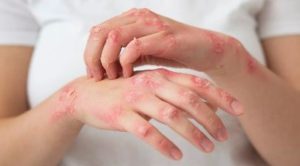
Leprosy is an age-old disease and is a chronic infectious disease that is caused by a type of bacteria called Mycobacterium leprae. The disease affects the skin, the peripheral nerves, the mucosa of the upper respiratory tract, and the eyes.
Leprosy is curable and treatment in the early stages can prevent disability.
Effect of Leprosy
According to Dr Rashmi Aderao, MD Dermatology Consultant at Ruby Hall Clinic, the response of our body to the infection often leads to intense inflammation, and in the involved nerve, it causes severe damage, leading to peripheral neuropathy. As a result, the affected person progressively loses sensation in these areas, which ultimately leads to erosion, ulceration, and bacterial superinfection, followed by the loss of fingers and toes, destruction of the structure of the nose, and, in some cases, blindness.
Due to the fear of transmission of the disease to healthy individuals, people infected with leprosy were treated badly. They were housed in the most decrepit settlements, which were often ringed with walls and barbed wires, with no protection from the harsh elements of nature, inadequate food and water, and little if any medical care.
The World Health Organization (WHO), working through the country office in India, supports the National Leprosy Eradication Programme (NLEP). WHO ensures an uninterrupted supply of the specific drugs needed for multi-drug combination treatment (MDT) of leprosy. WHO also assists in planning, capacity building, community education, monitoring and supervision, preparedness for campaigns, and supporting monitoring of service quality.
The active case detection activities aim at early identification of suspected cases in the community for prompt diagnosis and treatment. Countrywide awareness drives at the village level are conducted every year under the SPARSH Campaign to educate communities, stop stigma and discrimination, and find people who may be infected and link them to health care services.
It is crucial to change the negative perception of leprosy and encourage patients to come forward for treatment as soon as they note a suspicious skin patch. The objective of information campaigns could be to raise the suspicion index in the community and to initiate an informed decision to seek treatment on the appearance of such a suspicious skin lesion. This will gradually improve the acceptance of leprosy as a curable disease and disability management as an acceptable home-based care strategy.
Early diagnosis and treatment are pivotal in India’s quest for a Leprosy-Free Future by 2027. Swift identification of cases through active community engagement and annual awareness campaigns, coupled with prompt medical intervention prevents the progression of the disease and associated disabilities. Early treatment not only curtails transmission but also mitigates social stigma, fostering acceptance of affected individuals within their communities.
Treatment for Leprosy
Leprosy is treated with different types of antibiotics which help to kill the bacteria. Typically, two or three antibiotics are started which is called multidrug therapy. If already on treatment, report to the nearest dermatologist if you experience one of the following:
- Experience loss of sensation and numbness; which can be due to damage to the nerves.
- If the existing patches become tender, swollen, and painful.
Therefore, early detection and prompt treatment of the disease prevent stigma and discrimination. With treatment, the persons affected with leprosy can lead a productive life in the community.




 Driving Naari Programme launched in Chandigarh
Driving Naari Programme launched in Chandigarh






























